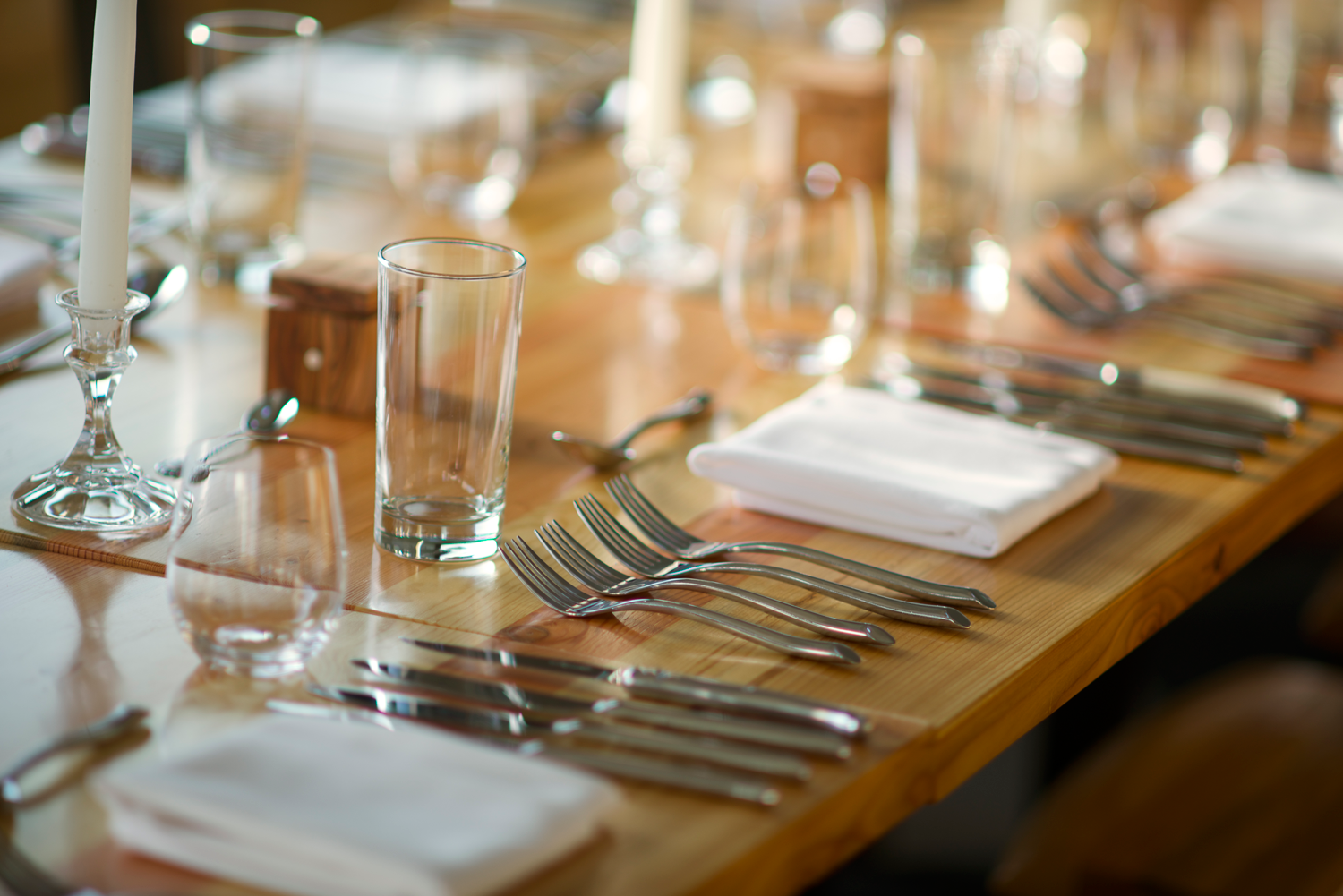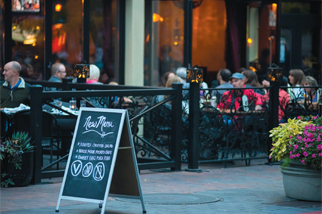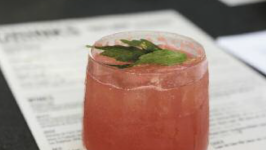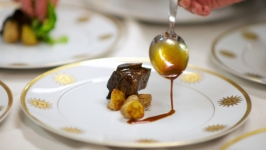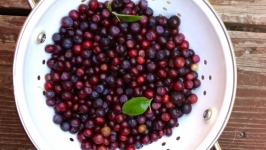Getting Famous for Food
Back in 2012 I wrote an article for the Boise Weekly asking, “Why hasn’t Boise landed on the national food map?” At the time, our closest cosmopolitan neighbors—Portland, Seattle, even Salt Lake City—were getting serious media buzz for their culinary scenes, while Boise stood on the sidelines like the eager kid who raises a hand but doesn’t get picked for the team.
Some would argue we’re already in the game, sighting recent James Beard Award nominations, regular best-of lists and magazine articles. But among the numerous Idaho food professionals I’ve talked to—people who are familiar with current hot spots like Portland, Maine; Asheville, North Carolina; or Austin, Texas—there’s a quantum difference in their food scenes and ours. To a person, they agree we need to be honest about that.
The reasons often mentioned are varied and debatable: our conservative culinary culture (which prizes tradition over the kind of innovation that gets national notice), our geographic isolation, our relatively homogenous population and a national image that for decades began and ended with the Russet Burbank potato.
Yet, in the last five years Boise has stepped it up: It only takes a look around town to see that we’re riding an encouraging culinary wave. Five years ago, there was no Treefort Music Festival and its Foodfort offshoot, no State & Lemp, no Wild Root Café, no Woodland Empire—not even a Boise Farmers Market (it split from the Capital City Public Market in 2013). There wasn’t even an Edible Idaho magazine.
So, does that mean, with a half-decade of development, we’re now primed to jump onto that national stage?
“I’m not sure,” says Saint Lawrence Gridiron owner Brian Garrett. "There are a couple of bubbles where we have people doing exciting things, but collectively, I don’t know if Boise is embracing local, creative food.”
It was easy to understand why Garrett was feeling skeptical on this particular summer afternoon: Earlier in the day he’d lost his liquor license— and for the owner of a restaurant known for its artisanal cocktail program, that’s devastating. Garrett believes Idaho’s liquor laws are one of the most obvious impediments to a vibrant local restaurant scene.
“We were leasing our liquor license from a real estate developer who had it attached to a dormant building,” says Garrett. He understands that the developer sold it for close to $200,000 to a chain hotel being built downtown.
Under a 69-year-old liquor law designed to foster “temperance and morality,” one license is offered for every 1,500 Idaho residents. That quota system has resulted in decade-long waiting lists, bidding wars and speculation that favors deep pockets and chain restaurants.
Garrett’s build-out costs for his 50-seat restaurant were roughly half of what it would likely cost to buy a liquor license. By contrast, cities like Portland, Oregon, aren’t hobbled by expensive, quota-based liquor laws and therefore have one fewer barrier-to-entry for budding restaurateurs who’d like to offer a craft cocktail program.
“There are very few liquor licenses in Boise that are owned and operated by small, local enterprises,” Garrett says, “and you’re at a competitive disadvantage without alcohol.”
Remi McManus, co-owner of State & Lemp, agrees, saying that Idaho’s liquor laws impact food too, indirectly dampening a restaurant’s ability to innovate. “If you’re going to buy a liquor license for $200,000,” he says, “you better have a 300-seat restaurant and you better put a burger and fish and chips on the menu so you can get as many people in the door as you can.”
Yet, it’s not only our liquor laws that tip the scales in favor of chain restaurants and unadventurous menus.
“I can see a future in Boise,” says Bittercreek/Red Feather owner Dave Krick, “where most of the restaurants in downtown are corporate restaurants because the economics are leading to that.” Along with a rise in small restaurants downtown, Boise has seen the countervailing arrival of Ruth’s Chris, P.F. Chang’s, Bonefish Grill, Buffalo Wild Wings and Eureka!, a burger chain that opened directly across the street from Bittercreek last October.
Corporate restaurants simply have the ability to pay more, says Krick, and that’s because “they work on a different efficiency level. They’ve centralized a lot of their resources and so their cost structure is more efficient than an independent restaurant that has to do every-thing themselves. But our culinary identity is not built by corporate restaurants; it’s built by local, independent, unique places.”
And that’s where this discussion of the Boise food scene slides from tangible hurdles that could be removed by amending liquor laws or enacting
zoning rules more favorable to local businesses (several American cities have tried, with varying degrees of success, to ban or restrict chain restaurants from their downtown cores) to more ephemeral challenges: like inventing an Idaho cuisine that’s the antithesis of chain restaurant food—something local, seasonal and uniquely ours.
Krick thinks we should double-down on local food if we want to develop a cuisine that expresses something deliciously, singularly Idahoan.
“The best food is always local,” Krick says. “If we want to have an authentic story, it’s got to be rooted in our agriculture here . . . because when you think about unique culinary places, it’s because they do something that is uniquely about them. Those are the places that are the most interesting, worldwide.”
Yet Krick admits we’re a long way from defining that authentic story. We’re still, after all, a relatively small town with a short history compared to culinary powerhouses like New York, San Francisco and Chicago. But, he says, we do have Native American and Basque traditions; indigenous
foods like trout, morels and huckleberries and passionate local farmers and chefs who are, as Krick explains, “trying to do something that’s in
harmony with who we are and who we’re trying to be.”
To that last point, Krick thinks we need to get local farmers and chefs into the same room together, to actively collaborate, to build menus as a partnership based on the best seasonal produce, fruits and meats available. Restaurants like State & Lemp and The Modern are doing just that, building relationships with farmers while creating menus flexible enough to accommodate agricultural uncertainties—but that’s not easy, specially for larger establishments, and requires a customer base willing to value innovation over February tomatoes or August apricots.
Still, Krick says, “It’s not a question of how do we do it. We have to do it if we want to survive. Local, independent restaurants need to be part of the fabric of the community and need to tell the story of the community—or they become obsolete.”
Whether we’re actually ready for the national spotlight or not is a moot point, according to Amy Rajkovich, tourism specialist for the Idaho Tourism Department. She says 72% of Idaho tourism dollars come from out-of-state visitors right now and that in 2015 alone travelers spent more on food—$694,000, to be exact—than on any other travel expense. In addition, she says, a large number of those travelers were millennials, a generation that research shows seek out authentic experiences and local food whenever they hit the road. That’s why Rajkovich works hard to convince Idaho restaurant owners to put locally sourced products on their menus. “This new generation of traveler,” she says, “is very conscious about where their food is coming from.”
As well as educating local restaurateurs to the value of food-based travel, Idaho Tourism actively encourages out-of-state press to visit and promote Idaho as a culinary destination. “We did a big media trip three years ago,” Rajkovich says, “and we had 12 to 13 journalists from across the country that came out” to tour dairies, cattle ranches, wineries and restaurants. Those tours are geared to generate positive press—and they often work. A Seattle writer started a glowing blog about a visit to Boise with “There’s more to Boise than blue turf and trees—and it starts right on a plate!” Another wrote “What I did not know is that the bacon (everywhere) would be salty and meaty and crunchy to perfection, the beef would be some of the finest beef I’ve ever tasted, and the desserts would be over the top imaginative.”
Yasuda, who will produce next year’s Foodfort at Treefort, admits that national attention has advantages. It could bring in much-needed fresh culinary talent, but also embolden local chefs to take more risks. He says that in towns like Portland, Oregon; Charleston, South Carolina; and Austin, where a couple of restaurants won national attention for pushing the envelope, it encouraged the whole community to take more chances “and people started to dig it.” Soon they were on that map.
At last year’s Foodfort, Yasuda moderated a panel grappling with ways to get Boise on that national food map too. The panel included Izabela Wojcik of the James Beard Foundation in New York; Mike Thelin of Feast Portland (OR); Hugh Acheson, an award-winning chef from Georgia; plus locals Remi McManus and Dave Krick. Though there was no ringing consensus on how to get Boise into the game, everyone agreed that would take nothing less than a cultural shift.
“It’s starting with the community,” says Yasuda, “community support, media support, talking about your strengths and weaknesses.” He sees that Foodfort panel as a good sign, but also sees hope in the cooperation that’s going on around town between establishments already.
He mentions the collaboration between folks at Woodland Empire, The Modern and State & Lemp to forage native plants together and then make one-of-a-kind beers collectively. Although it’s more common for restaurants to silo themselves away from the competition, Yasuda says cross pollination, the sharing of ideas and the setting of common goals is the way to create a culinary identity for Boise and the rest of Idaho.
“It’s not this isolated thing to want to have good restaurants,” says Yasuda. “It’s part of what makes a community great. Look at the music scene, we’ve got sports coming, all these different things. It’s the quality of life. You want to have great schools, you want to have your kids educated, but you want to be able to go out to dinner on Friday night somewhere other than Chili’s or McDonald’s. It all fits into the big picture of what makes Boise a really wonderful place to live.”
Brian Garrett, who has since worked out his liquor license issues, sees room for a little optimism.
“It’s so encouraging to me to have the conversation about what do we want, what do we want people to think about when they think about Boise? We can decide that . . . I’m encouraged that we’re trying. I’m encouraged that we’re having the conversation and moving in that direction. We weren’t doing it five years ago.”
Besides the tourist dollars that a vibrant food scene could lure to the state, outside accolades could also attract fresh culinary talent. At the moment, many in the Idaho food industry say we’re bleeding talent away as ambitious, budding chefs move to hotter food scenes while the rest must be satisfied working in Idaho’s rather uniform restaurant environment.
“If you’ve been in Boise for five years as a chef,” says Brian Garrett, “you’ve been through the same meat grinder. You’ve gone to the same establishments . . . and you come out of that meat grinder kind of 70% or 80% the same person as the next guy. You have the same habits, you have the same expectations, so when you ask somebody for something that’s creative or new, it’s always the thing that they know done a little bit differently.”
Despite the irony of bringing in newcomers to help create an authentic Idaho cuisine, Garrett likes the idea of a food scene that attracts out-of-state talent, “not because they’re better, not because they’re smarter, but because they have a different approach that has value in coming into the scene.”
Yet many Idahoans in the food industry are conflicted about the value of pursuing national praise for our still-coalescing food scene.
“Once you’ve entered the big game,” says Krick, “if you get thrown out, they’re going to be less receptive the next time. To me, there’s a big danger in premature arrival on that scene and what we want to do is make sure that what we’ve done is authentic.”
“Frankly,” says Dave Yasuda, marketing manager at Agri Beef, “from a personal, selfish perspective, I wish we had a killer scene here and no one knew about it but us . . . but it’s not a closed loop.”


